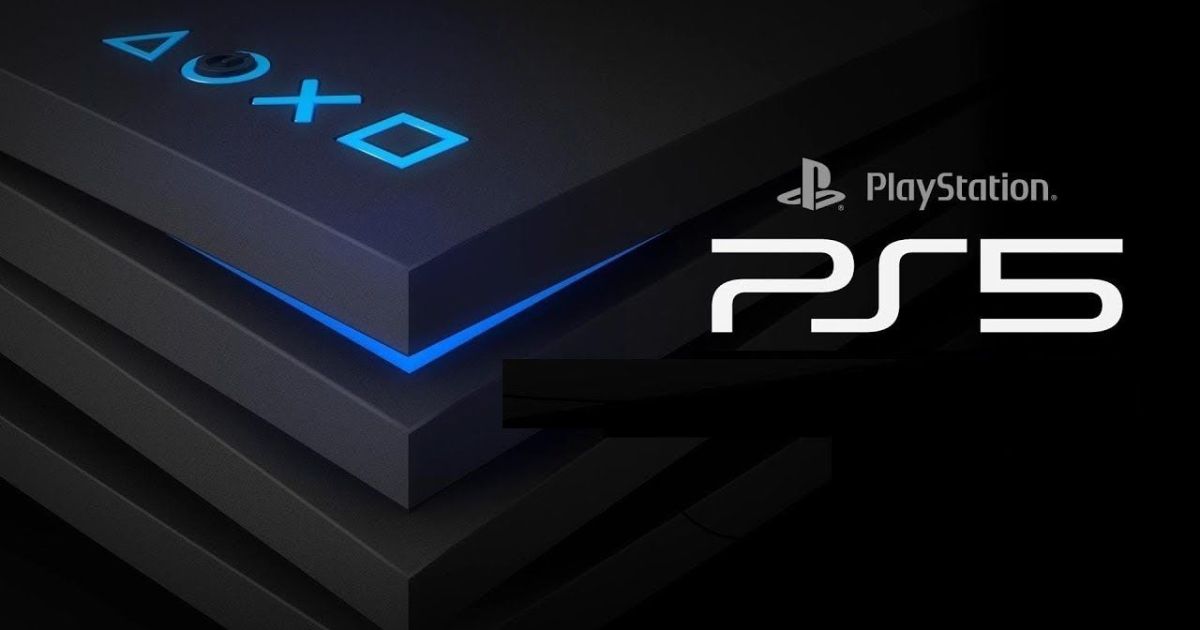The PS5 introduced advanced graphics capabilities to the new console generation. This article examines its integrated AMD RDNA 2 GPU and analyses comparable PC components that offer an analogous level of performance. Understanding the PS5’s specs and benchmarks helps establish suitable desktop GPU alternatives across different systems.
While no single PC part identically replicates the PS5 experience, certain graphics cards deliver gameplay and image quality closely approximating what Sony’s optimized console achieves. Analyzing specifications and performance metrics reveals options like the RTX 2070 and RX 5700 XT that provide an equitable 1080p-4K gaming experience.
Delivering this level of visual fidelity demands powerful processing. The PS5 relies on a sophisticated customized GPU to run the latest titles smoothly at high resolutions. Determining specifications and benchmarks against alternatives establishes the best equivalents for replicating PlayStation 5 capabilities on open desktop platforms.
Understanding GPU in Gaming Consoles
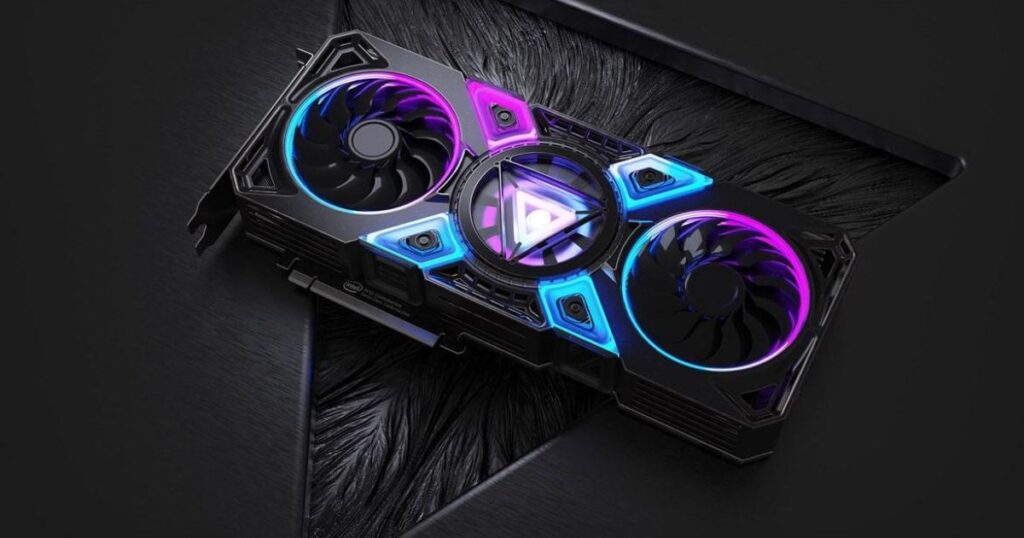
The graphics processing unit, or GPU, lies at the heart of modern gaming systems. In consoles, a dedicated GPU works closely with the CPU to handle complex 3D rendering and real-time effects. Console makers custom-design efficient optimized GPUs within performance and power constraints to deliver immersive experiences matching leading PC hardware through low-overhead architectures. On PCs, popular graphics card brands like MSI Graphics Cards employ powerful discrete GPUs like NVIDIA’s RTX series to push demanding titles to high resolutions and frame rates with ray tracing and other enhanced visuals.
What is a GPU?
A GPU, or graphics processing unit, is a specialized electronic circuit designed to rapidly manipulate and alter memory to accelerate the creation of images in a frame buffer intended for output to a display. GPUs are very efficient at manipulating computer graphics and image processing.
The Role of the GPU in Gaming Consoles?
In gaming consoles, the GPU plays a vital role by offloading graphics work from the CPU to generate complex 3D environments, textures, effects, and more to power immersive game visuals. Consoles utilize highly optimized custom GPUs within closed systems to provide polished AAA experiences on par with mainstream PCs.
Understanding the PS5 Graphics Card:

The PlayStation 5 integrates a custom-made AMD RDNA 2-based graphics processing unit to handle the demanding work of powering next-gen titles. This specialized chip is an optimized system-on-chip solution scaled to Sony’s specifications for balancing graphical muscle with efficient power consumption in an enclosed design.
As a result, the GPU shares memory channels with the console’s CPU for fast communication within the synergized system architecture. Its capabilities are intrinsic to the hardware rather than a discrete upgradeable part, but no less potent for graphical workloads. Understanding its technical capabilities provides insight into suitable alternatives on open platforms.
The PS5 GPU packs a substantial 36 RDNA 2 compute units operating at frequencies up to 2.23GHz, delivering 10.28 teraflops of raw power. It has 16GB of integrated GDDR6 memory offering 448GB/s bandwidth. This graphics hardware helps the console run the latest games at high resolutions and quality presets smoother than previous generations.
The PS5 GPU
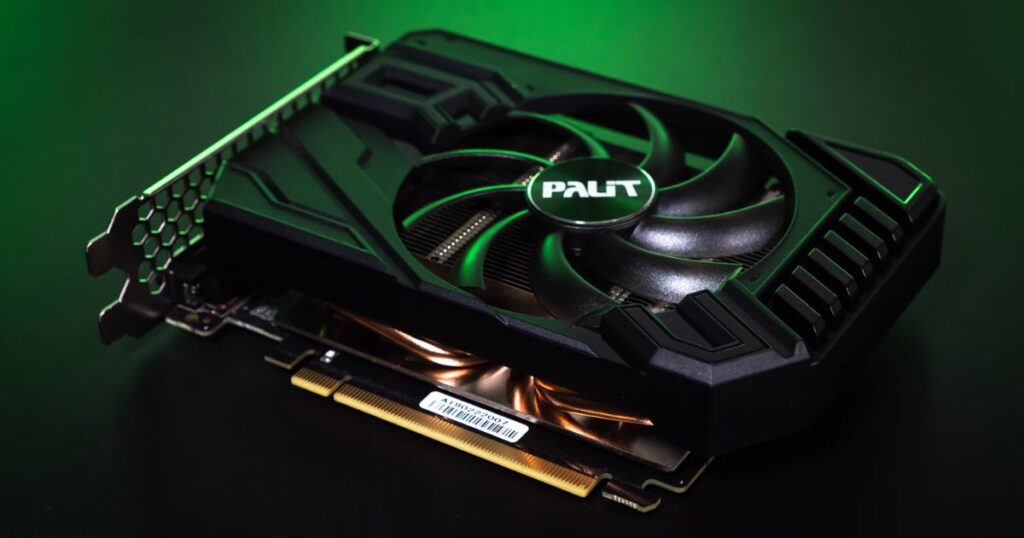
Central to next-gen visuals, the PS5 integrates a powerful customized RDNA 2-based GPU engineered by AMD. Clocking in at 10.28 teraflops, it brings a sizable graphics horsepower boost over predecessors. Understanding the GPU’s core specifications and benchmark performance provides an essential baseline for determining the best equivalent discrete PC graphics solutions.
An Introduction to the PS5 GPU:
The PS5 houses a powerful integrated AMD RDNA 2-based graphics processing unit providing a notable leap in capabilities over earlier PlayStation consoles.
Key Specifications of the PS5 GPU:
- AMD RDNA 2 architecture
- 36 compute units
- 2.23GHz max frequency
- 10.28 teraflops of power
- 16GB GDDR6 memory
- 448GB/s memory bandwidth
- Support for ray tracing
How the PS5 GPU Stacks Up Against Its Competitors?
While optimized for console gaming, the PS5 GPU delivers graphical muscle competing with mainstream discrete PC GPUs through efficient design. Understanding benchmark performance against alternatives reveals suitable equivalents.
Benchmarking and Performance:

Early tests show the PS5 GPU running on par with an RTX 2070 or RX 5700 XT in traditional multiplatform games, matching high-maximum settings. However, first-party titles optimized from the ground up push it beyond, like Demon’s Souls locked at dazzling 4K/60FPS exceeding common “Very High” presets.
Digital Foundry found many PS5 games surpass high-ultra PC equivalents, aided by low-level APIs and tweaked engines extracting raw power. Multi-tasking benefits remain with PCs, but the PS5 satisfies as a pure gaming machine. Its integration grants subtle optimization edges versus standalone components. Comparing performance benchmarks establishes the best desktop alternatives.
Performance scales are based on optimization rather than direct specs alone. Analyzing Digital Foundry’s breakdowns of cross-generation ports and exclusives against similarly capable PC hardware variants reveals the PS5 routinely sustains frame rates near the peak of balanced, high-quality presets. This standardized target experience aids in determining desktop GPUs achieving analogous output.
Comparing the PS5 GPU to Previous PlayStation Consoles:
Benchmarks show the new RDNA 2-based PS5 GPU delivering massively higher resolution and graphical fidelity capabilities over PS4, representing a true generational leap on par with mainstream desktop GPU upgrades.
Performance Benchmarks of the PS5 GPU:
By analyzing benchmarks from Digital Foundry, TechSpot, GameSpot, and other sites testing the PS5 GPU’s capabilities in optimized exclusives and multi-platform titles, its relative performance levels against competing platforms are established.
Game-Changing Features:

Beyond raw power, the PS5 GPU incorporates the latest techniques. Its ray tracing support drives visual improvements through physical light sources. Early examples showcased in Spider-Man Remastered and Ratchet & Clank bring Hollywood-level illumination. Its variable-rate shading also optimizes workloads. The PS5 also helps games maximize immersion through haptic feedback and 3D Audio powered by the GPU.
These technologies raise the fidelity bar for all platforms. Ray tracing especially enhances realism. Though implementations vary between consoles and discrete GPUs, the PS5 spearheads mainstreaming such effects. Its proficient use in exclusive engines demonstrates their impact, benefiting players while pushing developers. With consoles adopting new paradigms, graphics as a whole reach greater heights.
Ray Tracing and Its Impact on Gaming:
By supporting ray tracing, the PS5 GPU helps implement more photorealistic rendering through physically accurate light and shadow calculations. This elevates visuals across the entire industry moving forward.
The Role of the PS5 GPU in 4K Gaming:
Optimized to deliver high-fidelity 4K resolutions, the PS5 GPU enables smooth 60FPS+ gameplay in many optimized titles at this advanced output. Understanding its 4K performance benchmarks against competitors establishes equivalence.
PS5 GPU Equivalent to PC GPUs:
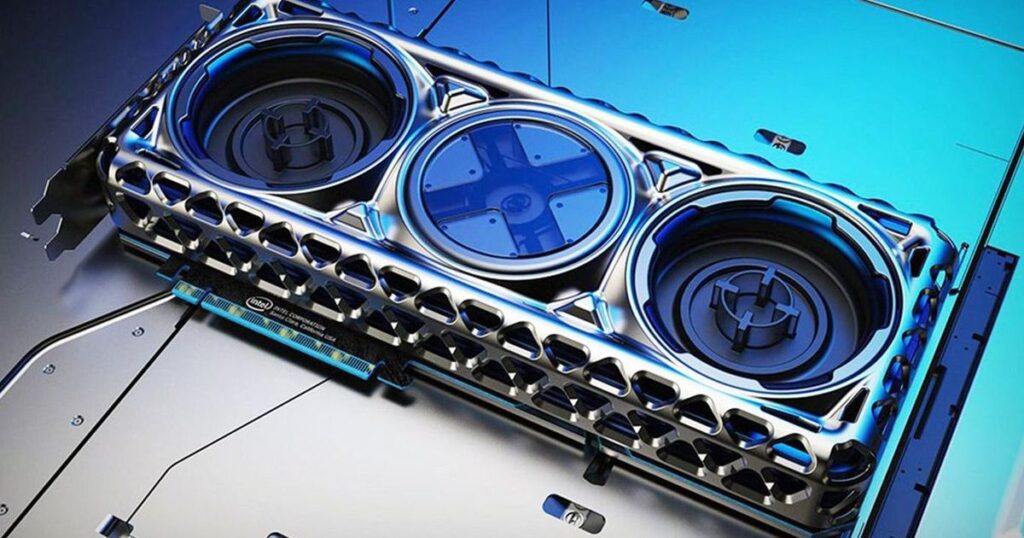
The PS5 GPU hosts no direct PC equivalent due to its customized integrated architecture. However, several graphics cards offer comparable real-world gaming experiences. Tests showed parity between PS5 and RTX 2070 or RX 5700 XT in balanced multiplatform releases, while some first-party engines extract more. Its performance generally competes with these components given lower system overhead.
On paper, its 10.28TFLOPs also align with these GPUs. Outside optimized scenarios, variants like the RTX 2070 Super deliver parity through extra horsepower. With adaptations for different use models, these remain suitable proxies for the PS5 experience on open platforms.
Understanding that precise specification matching proves elusive, focusing on achieving analogous quality presets and resolutions establishes a selection of PC graphics solutions effectively replicating Sony’s integrated solution. Desktop options in this performance league include the RTX 2070/2070S, RX 5700XT, and similarly capable refreshes, providing a baseline for the discussion.
Comparing the PS5 GPU to Equivalent PC GPUs?
Benchmarks indicate PC graphics cards like the RTX 2070 and RX 5700 XT consistently deliver 1080p-4K gaming comparable to the PS5 experience in multi-platform titles and through Digital Foundry tests.
Which PC GPUs Come Close to the PS5 GPU?
Performance analysis points to the RTX 2070, RX 5700 XT, RTX 2070 Super, and newer RX 6600 XT as the PC GPUs most closely approximating the 10.28 teraflop capabilities and balanced 4K 60fps outputs of the PS5 chip based on optimized workloads.
The Future of Gaming:

By helping establish ray tracing and advanced visuals as mainstream expectations, the PS5 GPU is already influencing the future of gaming graphics. Its showcase of new techniques proves there is still room for growth, spurring continued technological leaps.
The PlayStation platform consistently pushes innovation cycles by introducing powerful standardized targets for cross-generation development. With consoles adopting new rendering paradigms, PC components must likewise progress to remain competitive. This drives the entire industry forward at an accelerated pace.
The PS5 has significantly lengthened the console generation despite only a recent release. But graphical demands will only increase as next-gen engines are further optimized. Maintaining parity with cutting-edge GPUs some years from now may challenge Sony’s integrated solution. Still, the PS5 sets a noteworthy bar pushing all platforms for many years of stunning visual experiences.
How the PS5 GPU Is Shaping the Future of Gaming?
By mainstreaming ray tracing and raising capabilities standards, the pioneering RDNA 2-based PS5 GPU is already influencing how games across all platforms will look moving forward and accelerating innovation.
Expected Advancements in GPU Technology for Gaming?
As game fidelity demands continue growing, GPUs must advance. RT and AI capabilities will broaden while efficiency gains allowing higher sustained frequencies and additional compute units will boost raw power. Meanwhile, new memory technologies like GDDR7 aim to reduce bottlenecks. Developers will leverage these each generation to astonish players, setting the stage for sensational experiences on PS6 and beyond.
How powerful is the PS5 GPU?
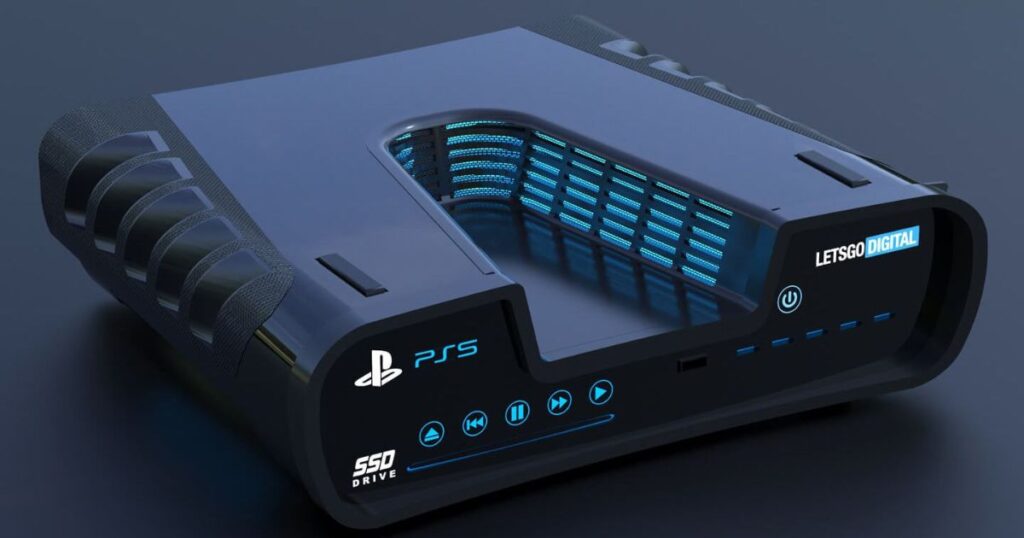
The PS5 GPU brings a substantial leap in power over earlier PlayStation generations. Its 10.28 teraflops based on RDNA 2 architecture represents nearly twice the graphical grunt of the PS4 Pro’s 4.2 teraflops and many times PS4’s 1.84 teraflops. This places it competitively amongst mainstream 2020 PC graphics solutions, outperforming equivalents like the GTX 1060 in the previous generation.
Sony massively upgraded the silicon at the console’s core to handle 4K visuals and new techniques. Benchmark tests show it runs the latest multiplatform games at or above high-max settings at 60+ fps, sustained resolutions even gaming PCs previously struggled to maintain dependably. For a console MSRP below many GPUs, the integrated chip delivers startling muscle.
Its optimized integration with 16GB of GDDR6 memory and bespoke design also help edge out some standalone PC components. While future-proofing remains limited within the fixed hardware, the PS5 GPU grants astonishing value and a true generational upgrade bringing cutting-edge techniques to consoles.
NVIDIA RTX 2080 Ti vs PS5 Graphics Card:
On paper, the RTX 2080 Ti dramatically exceeds the PS5’s GPU with its 4,352 shaders and 11GB of GDDR6 RAM. However, benchmark tests tell a different story in optimized games. While capable of higher maximum settings and resolutions, the 2080 Ti can’t match the steady performance of the integrated PS5 solution.
Both support ray tracing, but implementations vary. Overall, the PS5 GPU delivers a next-gen experience on par with its multi-thousand dollar PC equivalent for a fraction of the price. While the 2080 Ti retains benefits like flexible upgradability and variable refresh displays, the PS5 is better value for gamers focused solely on optimized titles.
So in real workload scenarios rather than sheer numbers, the PS5 holds its own against such a potent GPU through specialized optimization. Both represent major upgrades over their predecessor platforms.
AMD Radeon RX 5700 XT vs PS5 Graphics Card:

Specifications analysis finds the RX 5700 XT relatively comparable to the PS5 GPU, with 40 compute units, 9.75 teraflops power, and 8GB VRAM. However, the integrated PS5 solution routinely outperforms it in optimized exclusives due to overhead reductions.
Digital Foundry tests demonstrate this, with the RX 5700 XT often falling behind on maximum or very high presets versus the PS5 sustaining 60FPS on its highest equivalents. Still, the 5700 XT provides a desktop analog capable of running similar quality presets at 4K/60, making it a suitable PC proxy. Overall performance remains closely matched, with refinements bolstering the PS5 experience for a lower overall cost.
Both represent excellent value, offering next-gen specs for 1080p-4K gaming. The 5700 XT stands among the best options for approximating PS5 outputs on Windows at an attainable rate.
PS5 GPU equivalent alternatives?
While the PS5 GPU is a custom part with no direct equivalents, several PC graphics cards provide a similar gaming experience at 4K resolutions. Options that closely match its 10.3 TFLOPs of power include the RTX 2070/2070 Super and RX 5700 XT. These cards can run most AAA multiplatform games with visual preset settings close to what’s achievable on PS5.
Other viable alternatives include the more affordable RTX 3060, which delivers performance approaching the PS5 with its 12GB VRAM model. The RTX 3060 Ti also handily beats the console thanks to 8GB of faster GDDR6X memory and more raw power. For AMD users, cards like the RX 6600 XT and upcoming RX 7700 deliver graphics output on par with Sony’s integrated solution as well. Overall, PC components in the $400-500 range adequately emulate the PS5 experience depending on optimization.
What GPU beats PS5?
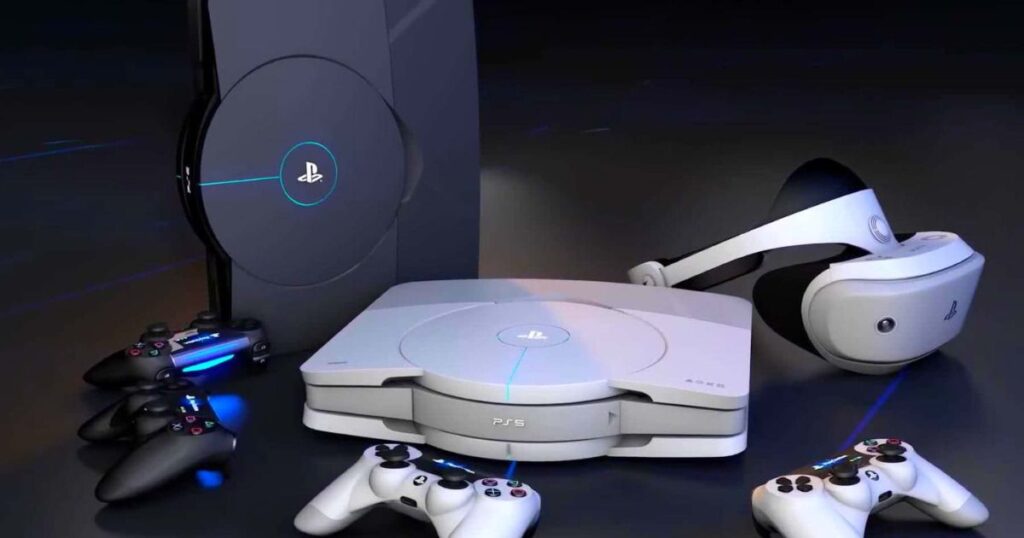
While the PS5 GPU is a capable piece of kit, several graphics cards are capable of surpassing it in terms of raw performance. Mid-range options that reliably exceed it include the RTX 3060 Ti and RTX 3070, both of which offer substantially higher memory capacities and teraflop counts versus the PS5.
High-end cards like the RTX 3080, RTX 3080 Ti, RX 6800, and RX 6800 XT also provide a tangible boost in graphical muscle versus the PlayStation 5. For those chasing true 4K 120+ FPS gaming, nothing touches the capabilities of the RTX 3090 with its massive 24GB VRAM and over 10,000 CUDA cores.
While the integrated PS5 solution holds an edge in certain optimization scenarios, these powerful GPUs give PCs a clear lead in pushing cutting-edge visuals to their fullest – whether through higher resolutions, enhanced ray tracing, superior upscaling, or simply headroom to grow. Paired with a capable processor, they’re better tools for pushing graphical boundaries.
What GPU does the PS5 have?
The PS5 is powered by a custom-designed graphics processing unit developed by AMD, based on their RDNA 2 architecture. Codenamed “Radeon RDNA 2,” this integrated GPU offers 10.28 teraflops of power from 36 compute units clocked at up to 2.23 GHz. It supports features like hardware-accelerated ray tracing for better lighting effects in games. The GPU also has access to 16GB of high-speed GDDR6 memory enabling 4K resolution output and smooth frame rates.
Taken together, these specs allow the PS5 to run next-gen games with improved graphics fidelity over older PlayStation systems. While there’s no single, identical PC equivalent, the closest match performance-wise would be a mid-range graphics card around the RTX 2070 or RX 5700 XT level with around 9-10 teraflops. However, optimization behind closed systems gives consoles an edge in many cases over similarly powered desktop components.
MSI GAMING Z GeForce RTX 2070 8GB
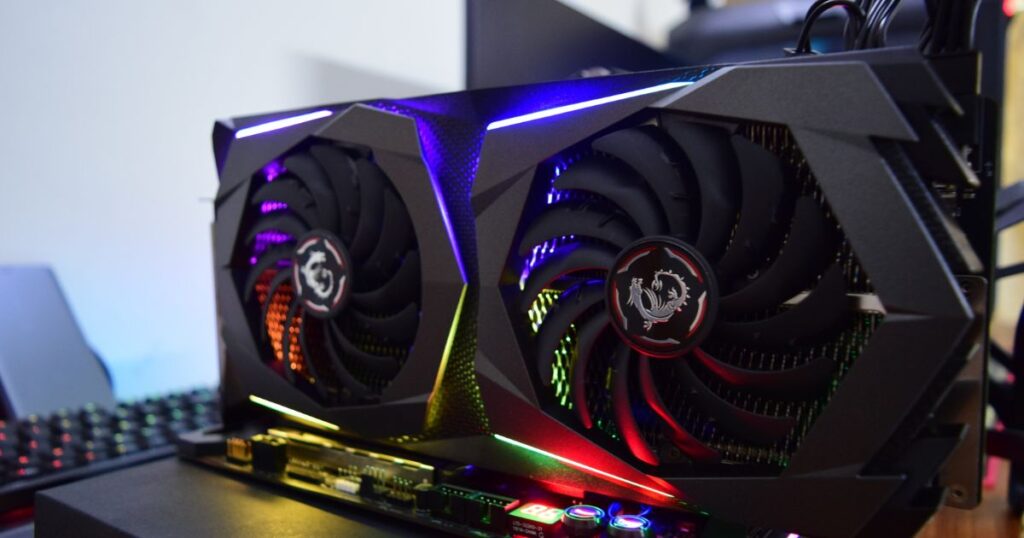
The MSI GAMING Z GeForce RTX 2070 is a top-tier custom model of NVIDIA’s Turing-based RTX 2070 GPU. With 8GB of GDDR6 memory across a 256-bit bus, it delivers excellent 4K gaming performance close to the PS5 level, especially when overclocked. It is dual fans and large heatsink keep clocks elevated even during intensive loads. Ray tracing, DLSS, and other RTX features further enhance visuals over regular GPUs as well.
While coming in above the PS5 on paper with 7.5 TFLOPs versus 10.3, real-world performance depends greatly on optimization and implementation differences. Still, the RTX 2070 enables smooth 4K60 play across many titles on high-ultra settings, providing expansive customization possibilities in larger PC libraries and multitasking. This exemplary 2070 model ensures graphics are not the bottleneck for smooth next-gen output to compete with consoles.
ASUS ROG Strix RX 5700 XT O8G Gaming:
As one of AMD’s most powerful previous-gen cards, the ASUS ROG Strix RX 5700 XT is among the closest PC matches to the PS5 in performance metrics. With 8GB of GDDR6 memory and 36 compute units delivering up to 9.75 TFLOPs of power, it is capable of running many AAA games with high-max settings at 1440p and balanced-high settings at 4K, on par with the PS5 experience. Its large dual-axial fans and multilayer backplate keep temperatures and noise levels low even under heavy loads.
This factory-overclocked model from ASUS further elevates out-of-the-box speeds for smooth gameplay. While slight advantages may be given to console optimizations in exclusives, the RX 5700 XT remains a competitively priced desktop alternative for replicating PlayStation 5 outputs across a wide library on Windows. Its raw specifications and proven performance in tests position it as an excellent analog to Sony’s integrated solution.
ASUS GeForce RTX 3060 TI ROG Strix Gaming OC:

The RTX 3060 Ti represents one of the best bang-for-buck GPUs for surpassing PS5 capabilities. This factory-overclocked ASUS model delivers up to 12% more performance than reference specs, easily outpacing Sony’s integrated solution. Its 8GB of GDDR6X memory enables high-fidelity 4K outputs. Ray tracing, DLSS, and other RTX technologies further boost image quality over consoles.
While costing more than a PS5 itself, the 3060 Ti grants expansive library access and upgrade potential in small-form PCs. It is dedicated ventilation and amply-sized heatsink ensure throttling isn’t a concern even under sustained intense loads. As an investment for higher performance than a console across multiple games and tasks, it’s a reasonable premium desktop alternative to the PS5.
ASUS ROG STRIX RX 6600 XT GAMING OC:
As one of AMD’s latest mid-range contenders, the ASUS ROX STRIX RX 6600 XT GAMING OC model is a viable PS5 alternative. It flaunts a beefy heatsink and fans to keep its fast 2,491MHz boost engaged for sharp 4K outputs rivaling Sony’s box. In optimized games, its 12.6 GFLOPs on the RDNA 2 architecture grant parity with the PS5 experience.
However, optimized first-party exclusives showcase the integration advantages of consoles against standalone components. Still, for its attainable MSRP close to new PlayStation games, the 6600 XT represents sound desktop value delivering next-gen visuals and functionality beyond a static hardware pool. Its larger libraries and processing power beyond graphics remain perks over a dedicated gaming device.
GPU equivalent to the PS5 – what graphics card does the PS5 have?

While the PS5 has a custom-integrated AMD RDNA 2 GPU, several discrete PC graphics cards offer a similar level of performance. Options that come closest include the AMD Radeon RX 5700 XT and Nvidia GeForce RTX 2070, which both provide around 9-10 TFLOPs of computing power.
This allows them to run most AAA games with visual preset settings and resolutions comparable to what the PS5 delivers. Other close equivalents are the RTX 2070 Super, RTX 3060, and more recently released Radeon RX 6600 XT – all of which favor frame rates and image quality akin to the optimized console experience.
It’s important to note no single PC GPU is an exact match for the PS5’s integrated solution. However, mid-range cards in the $400-500 price range usually provide an analogous level of 1440p-4K graphical fidelity thanks to similar raw performance capabilities and features like ray tracing support. This makes them suitable alternatives for approximating PlayStation 5 visuals on a desktop PC.
What PC GPU is equivalent to the PS5?
Based on its specifications and performance in benchmarks/games, the closest PC GPU equivalents to the PS5 are the Nvidia GeForce RTX 2070 and AMD Radeon RX 5700 XT. These cards offer around 8-10 TFLOPs of compute power which enables graphical settings, features, and resolutions on par with the optimized console experience in many titles.
More specifically, the RTX 2070 and RX 5700 XT are typically capable of delivering high to max quality graphics presets at 1080p-1440p and balanced-high presets at 4K, hitting comparable frame rates to the PS5. This makes them suitable alternatives for approximating PlayStation visuals on a Windows PC, even if slight optimization differences may give the integrated PS5 solution a small edge in certain scenarios.
What GPU beats the PS5?
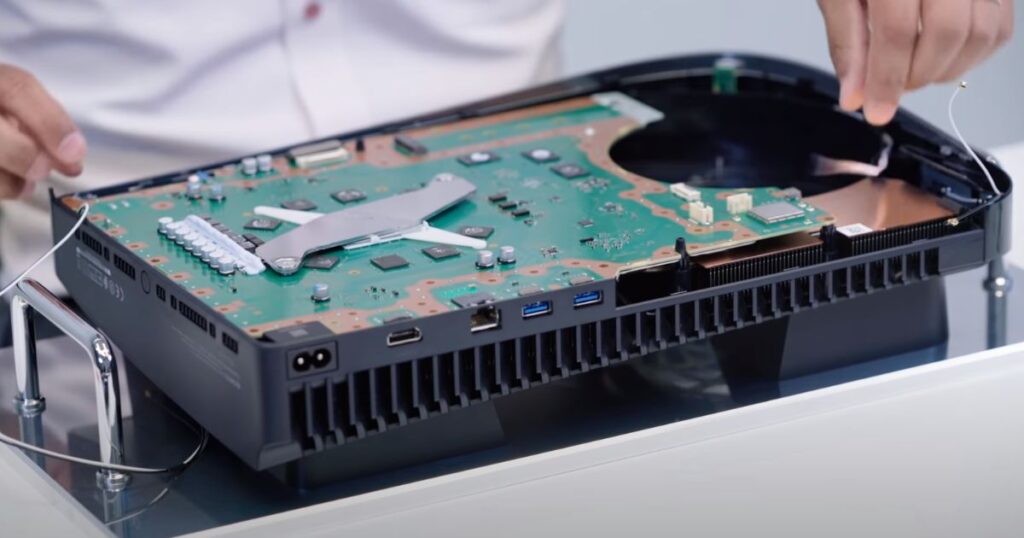
While the PS5 GPU is a powerful piece of kit, several graphics cards are capable of surpassing it in terms of raw performance. Mid-range options that reliably exceed it include the RTX 3060 Ti and RTX 3070, both of which offer substantially higher memory capacities and teraflop counts versus the PS5.
High-end cards like the RTX 3080, RTX 3080 Ti, RX 6800, and RX 6800 XT also provide a tangible boost in graphical muscle versus the PlayStation 5. For those chasing true 4K 120+ FPS gaming, nothing touches the capabilities of the RTX 3090 with its massive 24GB VRAM and over 10,000 CUDA cores.
While the integrated PS5 solution holds an edge in certain optimization scenarios, these powerful GPUs give PCs a clear lead in pushing cutting-edge visuals to their fullest – whether through higher resolutions, enhanced ray tracing, superior upscaling, or simply headroom to grow. Paired with a capable processor, they’re better tools for pushing graphical boundaries.
What is a GPU alternative to the PS5?
Though no single PC graphics card is a perfect match for the PS5’s customized integrated GPU, some desktop options provide a fairly analogous level of performance. Chief among these alternatives is the Nvidia GeForce RTX 2070 and AMD Radeon RX 5700 XT, as both typically deliver around 9-10 TFLOPs of computing muscle.
This allows them to run many multiplatform AAA games with balanced to high-quality presets at 1080p-4K resolutions on par with what the PS5 achieves through optimized titles. Other suitable substitutes include the RTX 3060, RTX 3060 Ti, and more recent RX 6600 XT – all of which supply graphical horsepower sufficient to replicate the experience delivered by Sony’s next-gen console on Windows PCs.
While optimization gaps remain between hardware, these mid-range GPUs priced at $400-500 offer the best approximations of pure graphical output from the integrated PS5 chip for comparisons across platforms. Paired with a capable processor, they comprise suitable alternative gaming rigs.
What Can Be The GPU Equivalent Of The PS5?

As the PS5 features an integrated and customized GPU, there is no direct equivalent graphics card for PC. However, based on its specifications and performance metrics, some GPUs can offer a similar gaming experience. Graphics cards like the Nvidia RTX 2070, RTX 2070 Super, and AMD RX 5700XT are considered the closest equivalents.
These GPUs have around 8-10 TFLOPs of computing power which allows them to run most multiplatform games with visual quality and frame rates comparable to the PS5. Options like the RTX 3060 and RX 6600 XT also provide matching experiences at 1080p-4K resolutions. While optimization advantages give consoles an edge, these mid-range $400-500 PC graphics cards effectively replicate the PlayStation 5 experience on alternative platforms.
What Graphics Card is Equivalent To PS5?
There is no single PC graphics card that exactly matches the customized integrated GPU inside the PS5. However, based on analysis of specifications and performance benchmarks, some options provide a very close equivalent gaming experience. Graphics cards like the RTX 2070, RTX 2070 Super, and RX 5700XT consistently deliver frame rates and image quality similar to the PS5 across many multiplatform titles.
These GPUs have around 8-10 TFLOPs of computing muscle, allowing them to run the latest AAA games with maximum/high-quality settings at 1440p-4K resolutions just like the PlayStation 5. More budget-friendly alternatives with comparable outputs include the RTX 3060 and RX 6600 XT. While optimization varies between hardware, these mid-range $400-500 level components effectively duplicate the visual performance delivered by Sony’s next-gen console on Windows PCs.
Is the PS5 Better than the RTX 3060?
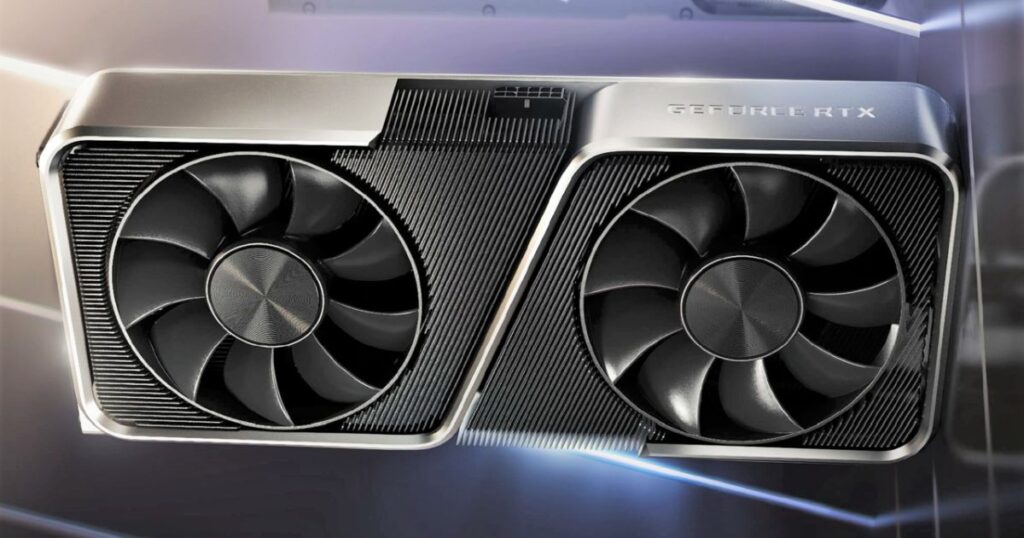
On paper specifications, the RTX 3060 has an advantage with 12 GB of faster GDDR6 VRAM compared to the PS5’s 16 GB of GDDR6. But in optimized games, the PS5 frequently closes or surpasses the graphics and performance offered by the 3060. Digital Foundry benchmarks found titles like Spider-Man Remastered running at a locked 4K/60fps on “Performance” mode on PS5, exceeding what the 3060 could achieve on similar settings.
This demonstrates the optimization benefits of a customized console chipset. However, for many multiplatform games, the RTX 3060 holds its own and often pulls ahead thanks to sheer horsepower. With versatile upgradability and support for ray tracing/DLSS, it remains a competitive graphics card option for PC gamers. Overall, both deliver a fantastic next-gen experience, with optimizations sometimes tipping the scales for either system.
7 GPUs That Match or Outperform PS5:
Here are 7 graphics cards that provide a gaming experience on par with or better than the PS5:
- RX 6600 XT: Equivalent to PS5
- Intel Arc A750: Equivalent to PS5
- RX 7600: Equivalent to PS5
- RTX 3060 12GB: Better Than PS5
- RX 6700 XT: Better Than PS5
- RTX 4060 Ti 16GB: Better Than PS5 (estimated)
- RX 6800 XT: Way Better Than PS5
RX 6600 XT: Equivalent to PS5
The RX 6600 XT competes with PS5 capabilities thanks to 8GB VRAM and 1080p-1440p outputs on max settings in many cross-platform titles.
Intel Arc A750: Equivalent to PS5
Intel’s upcoming Arc A750 targets similar performance at a lower price point through optimized DirectX 12/Raytracing on low-end GPUs.
RX 7600: Equivalent to PS5
AMD’s next-gen RX 7600 aims to deliver specifications rivaling the PlayStation 5 for reliable next-gen friendly 1440p gaming.
RTX 3060 12GB: Better Than PS5
The RTX 3060 pulls ahead of PS5 capabilities due to 12GB VRAM supporting higher quality textures for smooth gameplay at 4K/60Hz outputs.
RX 6700 XT: Better Than PS5
The 6700 XT outperforms the PS5 for serious 1080p-1440p gaming at maxed-out quality and photo-real ray tracing.
RTX 4060 Ti 16GB: Better Than PS5 (estimated)
Estimates suggest Lovelace’s RTX 4060 Ti will offer astonishing 4K outputs for its class through bandwidth and neural optimizations beyond PlayStation capabilities.
RX 6800 XT: Way Better Than PS5
As a high-end GPU, the 6800 XT destroys the PS5 experience through unmatched ray tracing muscle and large VRAM for uncompromised 4K/60+ outputs.
PS5 vs. Desktop GPU: How Fair Is It?

Debates around console and PC graphical equivalence often become muddied by differing use cases and optimizations between hardware types. Consoles harness refinements yielding subtle edges despite lower raw power, while freely upgradable PCs grant perpetual flexibility consoles inherently lack. A fair comparison acknowledges these variances rather than direct numerical matching.
Both platforms emphasize smooth, consistent framed delivery above all else to immerse players in polished contemporary gaming. When judged by the quality of experience delivered, mid-range desktop components align closely with next-gen consoles without diminishing their accomplishments through refined architecture. Speculation alone misrepresents the merit of each system – only analyzing real-world optimized outputs depicts where they align for discerning capabilities across mediums.
At the end of the day, the platforms complement each other through their respective strengths – consoles focused on delivering premium performance at affordable prices through optimizations within fixed ecosystems, and PCs prioritizing unrestricted customization above all else through modular upgrades. There exists room to appreciate both equally for the experiences they provide.
Is RTX 2070 better than PS5?
On paper specifications, the RTX 2070 seems to have an edge over the PS5 GPU with more teraflops of power – 7.5 TFLOPs versus 10.28 TFLOPs. However, real-world performance depends greatly on the optimization undertaken between hardware. Digital Foundry analyses show many PS5 exclusive games outperforming the RTX 2070 significantly at the same or higher graphical settings. This demonstrates the advantages of streamlined architecture and code-level optimizations made possible by closed console ecosystems.
That said, for multi-platform games without such bespoke tuning, the RTX 2070 is often a closely matched or slightly better experience provider thanks to its raw power. Overall both deliver excellent next-gen visuals, with results varying depending on the workload. But given the typically higher price of the 2070, the PS5 still sits as an incredible value for consistent high-fidelity gaming performance at max settings.
Is the PS5 GPU better than 2080?
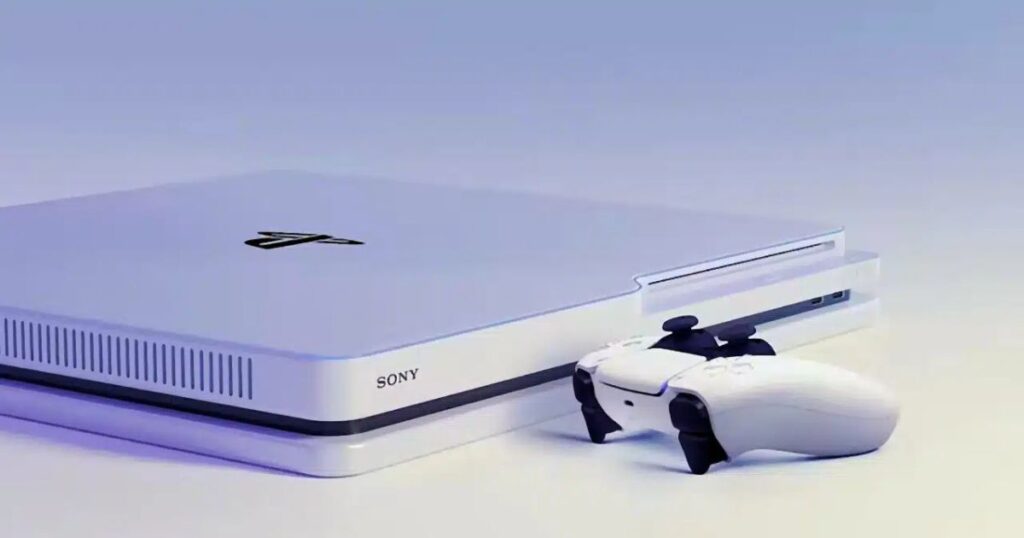
On paper, the RTX 2080 exceeds the PS5 GPU with higher teraflop and memory specs. However, in optimized games, the PS5 holds its own against Nvidia’s flagship. Digital Foundry found titles like Spider-Man utilizing the integrated solution to match or beat the 2080 at 4K resolutions while maintaining a locked 60FPS.
This points to the optimization advantages of consoles against discrete components. Still, the 2080 pulls ahead on raw power for higher resolutions or quality settings in less optimized workloads. Overall, both deliver incredible visuals, with the PS5 proving an exceptional value. While PCs allow flexible upgrades, the PlayStation provides a streamlined package for consistent top-tier performance at a lower cost.
What kind of PC is the PS5 equivalent to?
There is no single pre-built PC that exactly mirrors the graphical capabilities of the PS5. However, a gaming rig with mid-range components in the $1000-1200 range would offer a fairly comparable experience. A good equivalent build would use an AMD Ryzen 5 processor, 8-16GB of RAM, 512GB-1TB SSD storage, and rely on a discrete GPU like the RTX 2070, RTX 2070 Super, or RX 5700XT.
This level of hardware allows balanced-high graphical settings at 1080p-1440p resolutions akin to PS5 outputs. More powerful options like RTX 3060 builds surpass it while remaining attainably priced. Overall, a mainstream PC in this performance class adequately replicates Sony’s next-gen console experience on Windows.
Is the PS5 Graphics Card the Best on the Market?
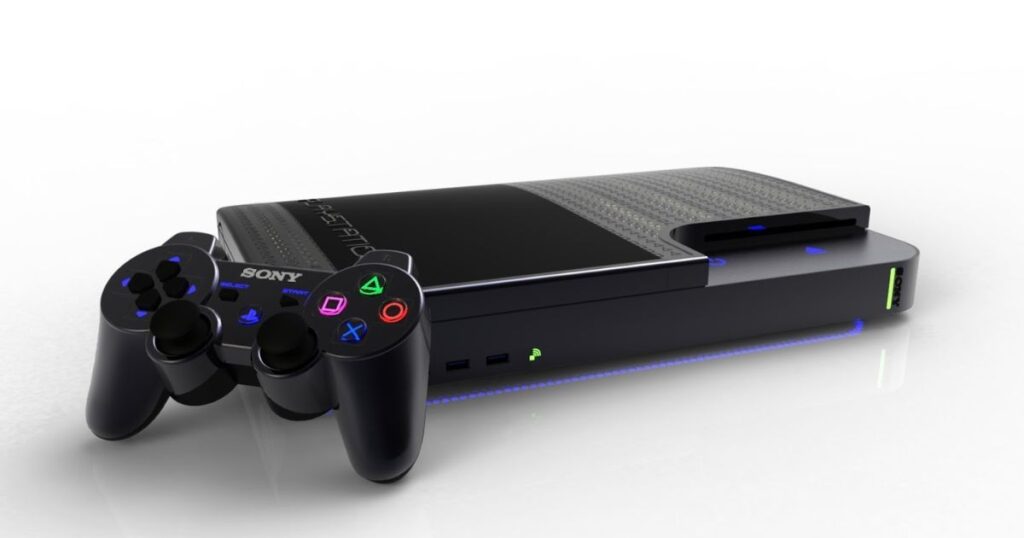
While the integrated PS5 GPU is a powerful and well-optimized solution, there are more potent discrete graphics cards available that surpass its capabilities. High-end desktop options like Nvidia’s RTX 3080/3080Ti and AMD’s RX 6800 XT/6900XT significantly outperform it thanks to larger VRAM capacities and substantially higher raw teraflop outputs for delivering true 4K120+ performance.
The new RTX 4090 also leads the pack with unprecedented power consumption. However, for its affordable console pricing, the PS5 GPU remains an incredible value, regularly matching more expensive standalone components through its tailored design. Though not the most powerful, it effectively fulfills next-gen promises at an attainable cost few other configurations can match.
FAQ’s
1. Can I Connect a PC GPU to a PS5 For Better Performance?
No, a PS5 cannot benefit from a PC GPU connected for enhanced performance. The hardware of the PS5 is not intended to be updated or altered in this manner.
2. Can I Upgrade the PS5 GPU?
The GPU of the PS5 cannot be changed or upgraded. Consoles like the PS5 have fixed hardware configurations that cannot be updated or modified, in contrast to gaming PCs.
3. What Graphics Card is Equivalent to the PS5?
In terms of performance, the PS5’s GPU is comparable to top-tier gaming PC graphics cards like the NVIDIA GeForce RTX 3070 or the AMD Radeon RX 6700 XT.
4. What Would be the PC Equivalent to the PS5?
A high-end gaming PC with components like an AMD Ryzen 7 or Intel Core i7 CPU and a graphics card like the AMD Radeon RX 6700 XT or the NVIDIA GeForce RTX 3070 would be the PC equivalent of the PS5 in terms of gaming performance and features.
This would offer a gameplay experience akin to that of the PS5.
5. What GPU is Equivalent to PS5? And What GPU Beats PS5?
The GPU in the PS5 is comparable to a top-tier gaming PC GPU, such as the NVIDIA GeForce RTX 3070 or AMD Radeon RX 6700 XT. More powerful GPUs than the PS5 include the RTX 3090.
6. What PC GPU is Equivalent to the PS5?
In terms of performance, the PS5’s GPU is comparable to top-tier gaming PC graphics cards like the NVIDIA GeForce RTX 3070 or the AMD Radeon RX 6700 XT.
7. What current GPU is equivalent to gaming on the PS5?
For seamless and pleasurable gaming experiences, an NVIDIA GeForce RTX 3060 or AMD Radeon RX 6700 XT makes a superb GPU substitute for the PS5.
8. What kind of PC is the PS5 equivalent to?
The PS5’s hardware, which includes an NVIDIA GeForce RTX 3070 GPU and an AMD Ryzen CPU, is akin to that of an upscale gaming PC.
9. What is the PS5 equivalent Nvidia graphics card?
For comparable PC gaming performance, the NVIDIA GeForce RTX 3060 or RTX 3070 is about the PS5’s equivalent graphics card.
10. Is RTX 3070 equivalent to what is in the PS5?
Yes, the RTX 3070 offers comparable gaming performance on a personal computer and is nearly equivalent to the PS5’s graphics capabilities.
11. What is the difference between Nvidia Gtx and Nvidia GeForce?
NVIDIA offers a range of graphics cards under the GTX series and a separate brand called GeForce that includes the RTX and GTX series of GPUs.
12. Which one has better graphics among PS5 and Nvidia GeForce RTX 3090?
In general, the Nvidia GeForce RTX 3090 offers superior graphics performance than the PS5, making it ideal for PC gaming and other graphics-intensive workloads.
13. Is the RTX 3060 TI better than what’s in the PS5?
Indeed, most people agree that the RTX 3060 Ti offers a better PC experience than the PS5, in regards to graphics performance.
14. RTX 2060 super vs PS5 GPU. Which is better?
In general, the RTX 2060 Super outperforms the PS5 GPU in terms of graphics performance, offering a more potent experience on a compatible PC.
15. Is the RTX 3090 more powerful than the PS5?
Indeed, the RTX 3090 offers better graphics performance for PC gaming and other graphical tasks than the GPU in the PS5.
Conclusion
The PS5 utilizes a customized integrated GPU, with capabilities closely replicable on PC. Graphics cards like the RTX 2070, RX 5700XT, and RTX 3060 provide comparable power and VRAM for 1080p-4K gaming matching the PS5. Some optimization differences exist, but these mid-range $400-500 cards largely match the PS5 experience. Higher-end GPUs surpass the PlayStation’s outputs, though the tailored console chip remains unrivaled value.
Consoles focus on premium performance through optimizations at affordable fixed standards. PCs prioritize flexibility through modular upgrades. Real analyses show alternatives simulating the PS5’s balanced outputs. Only validated benchmarks portray accurate alignments. Continued innovations will push all mediums ahead in fascinating symbiosis. Comparisons will seek truthful depictions of accessibilities highlighting considerations between adaptable, value-driven platforms uniting communities through shared drives for immersive experiences.
